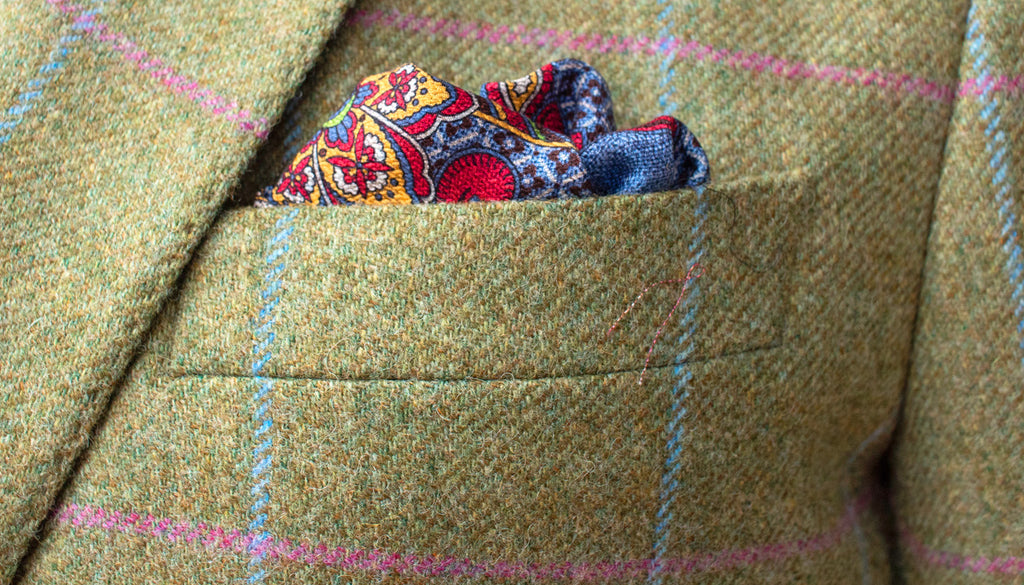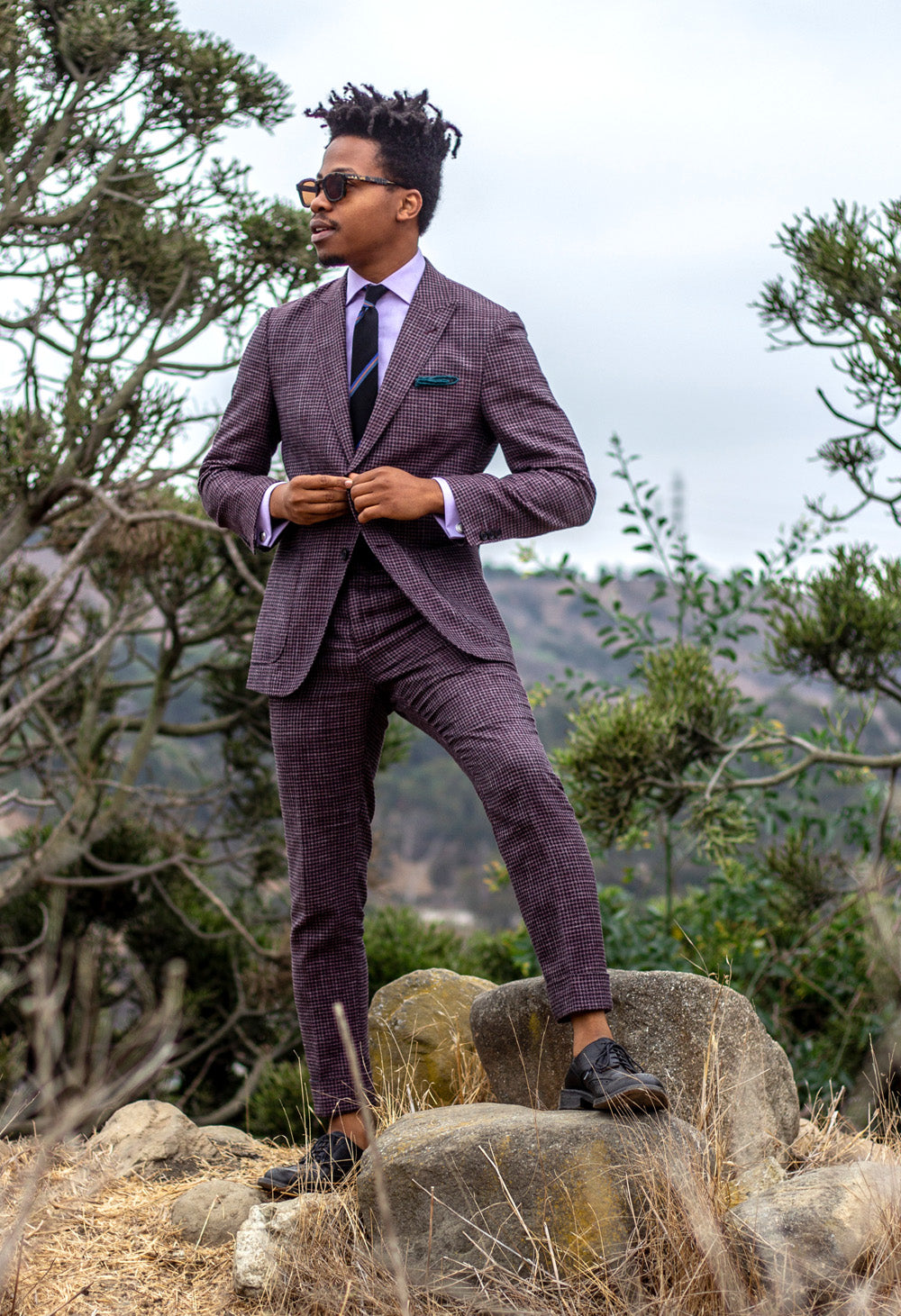Tweed: A Look at the Timeless Appeal and Versatility of this Iconic Fabric

Everyone is familiar with tweed! Some seek new pieces, some treasure tweed garments they’ve long had in their trad-style wardrobe, and others cherish memories of particular people who were seldom seen without their tweed bow tie or jacket. But what is tweed, really? And what is the history of tweed?
Let’s take a look at what is special about tweed and how you can incorporate this iconic fabric into your collection of fine accessories.
Tweed: A Brief History
Tweed has been a staple in the sheep-studded hills of Scotland and Ireland since the early 1700s. Originally called tweel - as in the Scot’s pronunciation of the “twill” weaving technique - it was presumed by an English merchant to be named after Scotland’s River Tweed. Maintaining its Scottish origin, the name stuck seemingly without protest.
Rugged, durable, and comfortable, tweed was commonly worn by farmers, hunters, and fishermen. Adding to the rustic look of tweed were the fabric’s color. Dyed with lichen and wildflowers, tweed fabric was typically brown, gray, and green.

Tweed caught the eye of the upper classes around the time when Prince Albert – as in the great-great-grandfather of Queen Elizabeth II, not her father – purchased Balmoral Castle in 1848. Thus the world now wears Balmoral tweed, Harris tweed, Donegal Tweed, and many other distinct tweeds - each named after their affiliated estate, region of origin, weaving technique, or the sheep the wool used is derived from! (This history is not so unlike that of tartan, which also hails from Scotland.)
What is Tweed Made of?
Here’s a common question: what kind of material is tweed?
Unsurprisingly from our mention of sheep, tweed is a woolen fabric known for its rough, textured feel, and enduring nature. It is traditionally made from wool gathered from sheep shorn for the first time, known as pure, new wool.

So, why call it by another name? What is the difference between tweed and wool? Is tweed warm and wool warmer? Distinguishing tweed vs wool comes down to how the fabric is manufactured.
Wool follows a traditional weaving pattern, whereas tweed is woven using the tight-interlocking patterns of twill, herringbone or plain-weave. The end result has a signature texture; tactile and dense. And yes, it’s certainly warm!
Is Tweed an Expensive Material?
Quality tweed is more expensive because of the cost of procuring and processing natural wool.
Of course, the introduction of machine fabrication has increasingly lowered tweed production prices compared to centuries ago. The type of sheep from which the wool is derived, the quality of the weave, and the overall popularity of the material itself are all factors in the price of tweed fabric.
Tweed stands out as one of the most sustainable and hardy fabrics, making up for the additional cost. The use of wool – a natural, renewable resource – makes it one of the more eco-friendly choices for garment production. Wool is also naturally flame resistant.

Tweed garments tend to last a lifetime, usually only requiring the addition of patches in well-worn areas. Today, patches most often save professorial elbows. In years gone by, shoulder patches were also common due to the prevalence of hunting guns being repeatedly slung over shoulders!
As with any fashion choice, finding the intersection of budget and quality is key. When thoughtfully purchased, tweed sees a return on investment from both a sophistication and practicality standpoint.
Is Tweed in Style in 2023?
Tweed is one of the few fabrics that have maintained relevance in its original form for centuries. Today, numerous iterations of tweed, including the ever-popular herringbone, are a mainstay in both modern and traditional clothing.
In fact, tweed is one of the most popular fabrics in today’s fashion! It is still most frequently found in earth tones, but modern variations of tweed fabric include bright, bold colors.

The tweed hunting jacket holds a special place in fashion history, and the modern tweed blazer or sport coat continues to carry that torch – especially in preppy and Ivy League style circles. The cut of a tweed jacket sends a message; a more relaxed fit serves as comfortable protection from the elements, while tailored garments carry an air of refinement.
Tweed fabric is the perfect choice for everything from a bespoke suit to a handsome accessory, and is welcome at casual as well as formal affairs. Between its vintage appeal and versatility, there’s no doubt tweed will continue to feature in cool-weather wardrobes across the globe.

Show us your tweed style! Tag us @RHanauer on Instagram and Facebook! And if you need help putting together a polished ensemble, contact us or visit our Fort Mill shop.
